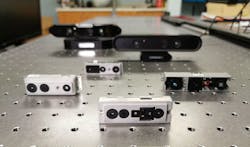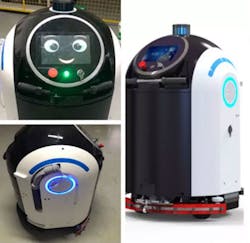Contactless Technology Gains Ground with 3D Imaging and Sensing
Interest in contactless technologies using three-dimensional imaging has been percolating for some time. Now commonplace, 3D imaging can be seen in healthcare, where robots can act as intermediaries in senior care living facilities; in smartphones, where facial recognition can be used to unlock devices quickly; and in gaming, for high-precision experiences.
Add to that an accelerated timeline created by the need for physical distancing—a byproduct of the coronavirus pandemic—and it becomes abundantly clear why 3D sensor imaging is gaining ground and being rapidly applied outside research facilities.
When it comes to 3D sensing technologies, the U.S. market is currently leading innovation, where we know that we can use machine learning to harness vision. “Almost 100% of our new products come from the U.S. market,” said Chen. China, where Orbbec has been working with a record number of partners, follows closely.
3D Imaging Advantage
With 2D cameras, such as the digital camera on a cell phone, one can capture features in daily life that are easy to understand. But the limitation in 2D technology is that it is a flat image that does not recognize how far apart objects are inside a given picture.
In contrast, using 3D imaging systems, “which include multiple RGB or IR cameras,” one can add distance or depth information to each pixel on the RGB image, said Chen. This advantage accurately measures the distances between objects in a complete scene in real time.
When the computer or robot reads images in 3D, explained Chen, it will not only know the color or shape information from the flat image, but will also know the position or size information. “This feature has made possible a number of high-end applications, including autonomous driving systems, where there’s a need to determine the distance to surrounding objects,” he said.
Industry Uptake
Orbbec’s 3D sensors offer different revolution or sensing ranges that satisfy the needs of diverse vendors, said Chen. The company’s proprietary microchip for processing depth data in real time, combined with machine learning and artificial intelligence, opens up a myriad of usage possibilities. These include the ability to perform complex navigation and obstacle avoidance found in restaurant food service robots (Bear Robotics); intelligent fall detection sensors (Cogvis); self-checkout solutions (Elo); and people and motion tracking systems (Orbbec Persee).
Chen pinpoints three high-demand verticals: The first is face recognition technology. To date, Orbbec has delivered several million cameras for face recognition applications and the company’s main customer is in China.
The second high-demand category is emerging in 3D scanning. In particular, virtual home tours are trending as an important aspect in prospecting among tech-savvy decision makers. According to the 2018 Zillow Group Consumer Housing Trends Report, 45% of Gen Z and 41% of Millennial buyers find 3D tours or recorded video of a home very or extremely important in helping them decide on their home. This trend is bolstered by the coronavirus, as it’s become inconvenient for potential home buyers to visit in person due to the health risks. “If you visit sites like Zillow.com, you’ll see how 3D cameras are helping agents generate virtual tours of properties,” Chen said.
A third category of high-demand is associated with applications in robotics or surveillance automation. Chen said Orbbec is working with Fortune 500 companies in the retail space to develop 3D surveillance products for tasks such as people counting, shelf analysis, inventory monitoring, and data analysis and forecasting.
Market Penetration
In addition to robotics and the AI industry, the pandemic has elevated a shift to telemedicine, which extends the technology’s realm of applications even further. In China, Orbbec’s cameras have been called into service to reduce the workload of frontline workers in healthcare settings, in delivery robots that deliver meals to patients, in sanitizing robots that clean hospitals and in guiding robots that might steer patients towards the right department.
An area of specialization is emerging as Orbbec works with several customers to develop monitoring systems for seniors. “Our systems do not need to use the RGB data all the time, so we can protect privacy very well,” said Chen, explaining that in some instances, such as when a patient has fallen to the ground, 3D cameras may interpret anomalies in depth data without the need to read every detail in the image.
Future-Proofing
Among areas under development, Orbbec is targeting long-range sensing technology that can be trialed in “smart city” applications and other “outside” solutions. Most of Orbbec’s legacy products are based on structured light 3D scanning or laser projection. “That technology is very hard to work with outside because of the sunshine; it contains the same wavelengths of light as the laser does,” said Chen.
He also noted that Orbbec is working on increasing the accuracy and resolution of its legacy products: “These generic improvements will make restructuring easier in developing new products based on cameras.”
About the Author
Rehana Begg
Senior Editor, Machine Design and Hydraulics & Pneumatics

Leaders relevant to this article:



